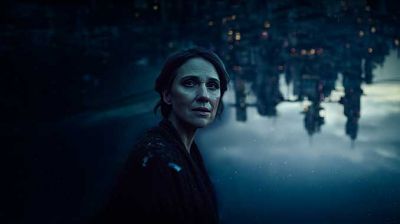
The Machine Stops
Click here if you liked this article 10 ![]()
https://www.theatreworks.org.au/2025/the-machine-stops
Date Reviewed: 23/08/2025
Some performances comfort us, other performances challenge us. The Machine Stops, adapted by Briony Dunn from E.M. Forster’s 1909 novella, falls into the latter category. Watching it at Theatre Works felt less like passive viewing and more like an endurance test - slow, fast, and then slow again - it demands attention and patience in a way that was deliberately uncomfortable. And yet, that discomfort is what makes the production both powerful and important.
Forster’s revolutionary vision of an underground society, one in which humans live isolated and communicate only through a global messaging system, has often been praised as prophetic. This adaptation makes his predictions impossible to ignore. In a world now dominated by screens and instant access, the play’s warning feels eerily familiar, asking us to consider not just if but when the machine takes over.
The staging itself sets the tone: long stark pillars hang heavily from the ceiling. Lighting by Niklas Pajanti is incredible rays of yellow light act as a landmark for routine activities (eating, sleeping), harsh fluorescents signal surveillance and scanning, and shifting shadows mirror the instability of the characters inner worlds. Sound design by Darrin Verhagen compounds the unease, alternating between mechanical hums and moments of almost unbearable silence.
For much of the first half, Mary Helen Sassman, as the mother, Vashti, carries the stage solo. Her expressive face and voice, her fear and yearn, carry the production. When joined by her son, Kuno (Patrick Livesey), who has dared to leave the machine’s below-ground comfort, their exchanges sharpen the narrative’s urgency. His rebellion, her resistance, and the wall between them reflect a timeless generational struggle: conformity versus curiosity, fear versus freedom.
The experience is not easy. At times, the pacing drags, stretching scenes to the point of frustration. But this seems intentional. Forcing the audience to sit with boredom, repetition, and the very loss of human energy that the play critiques. The result is polarising, some will resist, others will lean in.
By the end, the production leaves you with a chilling realisation. What once seemed far-fetched is now inching closer and closer to reality. The performance doesn’t just retell Forster’s story; it asks us to look at ourselves and our dependence on technology, our growing disconnect from undisturbed experience and admit how far along this path we already are.